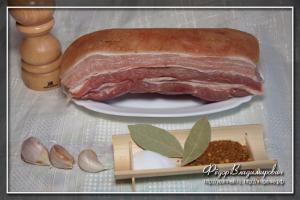When working with a hand drill, it can sometimes be difficult to maintain the specified direction of the hole. Conductors are also used if it is necessary to make a series of similar holes according to a template. For example, during carpentry work. In this case, the master does not waste time marking the tree, and is guaranteed to get the same result.
The jig is indispensable when drilling holes in pipes. But the main application is to pass holes at a given angle.
Let's consider various options this useful device:
Jig for perpendicular drilling of holes
A simple furniture jig for drilling holes when assembling metal furniture. Details in the video material
Purpose - to obtain passes in thick workpieces, strictly at an angle of 90°. It is a set of bushings in a single body, or a bracket with replaceable working attachments.
By installing the device above the drilling point, you can start working without pre-punching. The drill accurately hits the center of the sleeve and does not deviate from the axis.
Important! The only problem is that the tool must be held on the workpiece, especially at the beginning of work. Otherwise, vibration may cause it to shift.
You can make such a drilling jig with your own hands. Thick textolite or solid wood is used. Perfect option— the use of extruder bushings for drawing wire. Worn bushings can be found at the factory. 
The extruder nozzles are made of alloy steel, with the addition of pobedite. The service life is practically inexhaustible.
Conductor for cylindrical blanks or pipes
Making a hole in a sloping surface is almost impossible. It is especially difficult to start the process - the tip of the drill jumps off the specified point. The device will fix the direction and allow you to perform the work with high accuracy. 
By adjusting the length of the fixing bolts, you can drill a hole tangentially to the center. If you don’t have such a tool at hand, you can make it from scrap materials. For example, from a block of hard wood and a strip of plywood. 
To prevent the guides from being broken so quickly by the sharp edges of the drill, they can be reinforced with sleeves made of tubes of different diameters.
Furniture jigs for drilling holes deserve a separate description.
Jig for angled holes
This type of drilling is not very common, however, there are ways to fasten products to each other when this technology cannot be done without. 
In fact, the hole is made tangentially, which is almost impossible to do while holding the drill with your hands.
Important! In metal parts, such recesses can only be made using a milling cutter.
And for wooden blanks there is a ready-made kit. 
Any carpenter is familiar with this method of drilling; professionals use this device all the time. Working with the jig is easy: you set the drilling height, the workpiece is pressed tightly against the stop, and you get precise oblique holes. 
A stop-limiter must be put on the drill, otherwise the hole will end up through. Then the screw head will fall through. In addition, it is better to do such fasteners using a special drill with a double diameter. 
It is difficult to make such a device yourself. Although there is simple options, not particularly accurate. 
There is a separate type of device: for drilling at an angle with an adjustable tilt. This is a specific jig that is not suitable for all workpieces. 
The type of fastener indicated above is only suitable for an array. Pressed slabs cannot be joined this way.
This allows you to accurately and efficiently make holes in products made from natural wood, chipboard, MDF, metal and other materials. convenient device as a conductor. This device, in particular, is actively used by specialists involved in the production of furniture. At the same time, the conductor can either be purchased in a serial version or made with your own hands.
Design features and types
A jig, in essence, is a template for drilling holes, allowing you to make them as accurately as possible. It is used both to create holes, the axis of which is perpendicular to the surface of the part, and for drilling at an angle.
Due to their versatility and simplicity, drilling jigs are widely used in various fields. In particular, in the mechanical engineering industry they have long been used to successfully drill holes in workpieces of various configurations and made of different materials. You cannot work without a conductor and in furniture production, where such a device is actively used when assembling furniture, installing fittings on it and performing a number of other technological operations. Construction is another area where conductors are widely used. With their help, in particular, they drill holes in building structures. Conductors are also needed for drilling pipes and solving other tasks.

As furniture jigs, overhead models made of lightweight materials are most often used to make them more convenient to manipulate. You can purchase such devices prefabricated or make a furniture jig with your own hands. Qualified furniture makers may not use a jig to accurately and accurately drill holes in furniture structural elements, but to do this they must have extensive experience in their field.
The most significant advantage of the jig is that with its help, even a person who is not highly qualified can perform high-quality and accurate drilling of both a hole perpendicular to the surface of the part and an inclined hole. The use of conductors eliminates the need for complex preliminary calculations and marking the locations of future holes, which reduces the labor intensity of assembling a furniture structure and allows such work to be completed in a shorter period of time. Even a novice specialist can understand the use of a jig for drilling for dowels and solving other technological problems.

Before purchasing or making your own homemade jig, determine what tasks you need to use it for, and based on this data, select its type and design.
Among the jigs for drilling holes, according to the type of design and functionality, we can distinguish whole line categories.Invoices
These jigs are so called because they are placed on the workpiece and secured to it or simply fixed by hand. Using jigs of this type, in particular, they drill holes in chipboard, MDF boards and other flat parts.
RotarySuch templates can be used to make holes on cylindrical parts. Conductors of this type are equipped with vertical and horizontal axes of rotation, which makes it possible to make holes at different angles with their help.
UniversalThese are devices that are especially relevant for small batch production, where the ability to quickly change over the equipment used is important. This type of conductor is endowed with just such functions.

These devices for drilling holes are required in cases where such a technological operation has to be performed in several planes.
Sliding and pinningThe sliding jig, in full accordance with its name, does not require fastening: it is simply applied to the area of the surface of the part where the hole needs to be drilled. Fixed conductor devices, although more convenient, somewhat limit the freedom of action of the specialist, which is especially critical when performing drilling work on machines equipped with only one spindle.
Areas of use
Furniture conductors and templates are devices that are practically impossible to do without when assembling furniture structures. The use of jigs allows you to avoid the main problem that arises when drilling holes - the drill entering the workpiece at the wrong angle. Correcting this error takes a lot of time and effort, and it is not always possible to fix it at all. The jig used for drilling holes not only allows you to correctly orient the drill at the processing site, but also prevents the tool from straying from the specified trajectory.
Devices such as furniture jigs and templates are used both in the production and assembly of furniture, when holes must be made in the elements being connected to accommodate fasteners. In such cases, a jig for dowels or a jig for drilling for confirmation is often used, without which it is not possible to make high-quality holes for fasteners. Such a device is indispensable in cases where it is necessary to make holes, including at an angle, in thin slabs (in particular, when making holes in chipboard or MDF).

When using a jig to drill holes, the process of assembling furniture is simple and fast. Using such a device, holes can be drilled at any distance from the edge of the part, regardless of its width.
IN modern furniture Dowels are actively used, which at the same time are a rather outdated fastening element. That is why the doweling jig is used in the production of furniture structures. The main difficulty when using such fasteners is that the axes of the holes made in the parts being connected have a right angle to each other. Accordingly, such holes should be located strictly perpendicular to each other. Without the use of such a device as a dowel jig, it is difficult to perform them.

Furniture production is not the only area in which jigs designed for drilling holes are used. Templates are no less often used to drill a hole in a pipe and other parts that have cylindrical shape. Conductors allow you to make high-quality holes even in small-diameter pipes.
The size and operating principle of modern conductors may vary. Some of the models of such devices are much easier to buy, and some are easy to make with your own hands. The fact that serial devices, especially those for universal use, are not cheap, also speaks in favor of making a furniture jig for drilling holes with your own hands.
Homemade conductor devices
Conductors simplest design, for example, those that are used for drilling holes for confirmation are relatively inexpensive, so many craftsmen are not puzzled by them self-production and purchase production models. Meanwhile, there are those who are even like this simple devices trying to do it with his own hands. The question of how to make a jig for drilling with your own hands often arises and, if necessary, drill non-standard holes.
To make your own jig for dowels or a jig for confirmations that is simpler in design, you can use drawings and videos on the Internet.

To manufacture such a device, naturally, you will need a drawing of it. You also need a minimum set of tools and equipment:
- electric or hand drill;
- a set of locksmith tools;
- Bulgarian;
- welding machine(for the manufacture of jig devices of a more complex design).
The simplest homemade conductor can be made from available tools and materials that are available in abundance in most home workshops or garages. Use of materials such as pieces metal fittings, wooden blocks, metal plates, etc., allows you to significantly save on purchasing a serial model of the device.

Making a homemade jig for a drill or single-spindle machine takes place in several stages.
- Square reinforcement with a cross section of 10 by 10 mm, using a hacksaw or grinder, must be cut into pieces of the required length.
- The centers of the holes through which drilling will be performed should be at a distance of 8 mm from the edge of the conductor plate. It is at this distance that the center of the chipboard or MDF board in which the hole is drilled is located.
- The pitch between the holes on the jig, in accordance with generally accepted furniture standards, is 32 mm, while the diameter of such holes should be 5 mm.
- If you equip a homemade conductor with a stop, then using such a device will be much more convenient. To create such a stop, you need a metal plate 1 mm thick and 25 mm wide, which is bent at a right angle and fixed to a ready-made jig device made from reinforcement.
- After structural elements homemade conductor are fixed with a clamp, they must be securely connected to each other using threaded fasteners.

Jan 26 2015
Conductor for furniture hinges.
I'll tell you about another conductor of mine, which I purchased on occasion together with. The manufacturer is the same - the Cheron company (Voronezh). In principle, I wanted to make such a conductor myself, but its cost was only 300 rubles, so I didn’t bother and just bought it (you can make it yourself).
In general, this is a marking conductor. It's called MSh-06. Its design is extremely simple: plastic corner on which holes are marked for adding the hinge itself to the facade, the strike plate for overhead and inset hinges.
All holes are signed, which makes it easy to work with simple matter. In general, the conductor comes complete with detailed instructions(although for me, this is an unnecessary thing in this case, but it’s still nice).

Working with a conductor is as easy as shelling pears: we mark the marks on the façade and on the frame opposite the intended loop, taking into account that the façade is slightly smaller in size than the frame (see instructions).
We apply the jig to the edge of the box, centering it along the mark (for this purpose, an “arrow” is cut out on the jig), after which we simply mark the holes with a pencil or immediately with an awl.

I checked it - the hinges are just perfect. Again, saving time. I did it before (on a finished case) - it was not so convenient, and the accuracy was poor. 
If I didn’t explain something clearly, then this video will help you in mastering the gimmick.
Precision drilling, used to connect wooden, metal and other elements to each other, is the key to the fact that the product will be of high quality, without backlash, durable and will be used effectively long time. When chipboard processing, OSB, MDF and other materials, it is recommended to use a jig to drill holes to achieve successful results.
Need for an assistive device
A do-it-yourself drilling jig helps with both living conditions, and during industrial processing. This product is a thick metal strip. It has several holes, inside of which there are special bushings - sleeves.

Template makers can be manufactured in different options, but everyone has the same task - marking for drilling
A step-by-step algorithm that involves using a jig to drill holes in workpieces consists of the following steps:
- determine the drilling location;
- apply a conductor to it;
- fix the device in a convenient way;
- We put sleeves in the holes;
- drill in the indicated places.
Classification of markers
A jig for drilling holes with your own hands is used in various areas of production activity. Based on similar characteristics, similar auxiliary devices are usually divided into several groups:
Jig for drilling holes

An overhead jig with a turret head is suitable for drilling standard holes for dowels of any size
The group is called this way because of the way it is operated. The product is usually installed on top of the intended workpiece and fixed using screw clamps. Less often, at home, it is based on an emphasis on any plane. This way you can mark holes for furniture screws.
Rotary jig for drilling holes

This jig is used for drilling at an angle. Comfortable processing is achieved due to guide bushings.
Tilting jig for drilling holes

Tiltable for use on multiple surfaces
The group is involved in drilling on several surfaces located at an angle to each other.
Sliding jig for drilling holes

They are in demand in areas where it is not possible to fix the marker. The guide bushings are mounted on folding bars.
Not only jigs are widely used for drilling holes for confirmation, but templates are also used in mechanical engineering, when it is necessary to make many of the same type of drills in workpieces.
This device has many advantages:
- achieves maximum accuracy in finished products;
- ease of operation;
- the ability to repeat the center distance on any surface at a convenient time;
- affordable cost of the finished product;
- You can make a homemade jig for any workpieces and different center distances.
VIDEO: How to make a self-centering jig for drilling holes for furniture dowels
Scope of application
During the furniture assembly process, some drawings indicate where to drill holes where the pins will be located inside. In such a situation, you cannot do without an accurate tool. It will not be possible to align the mates on the parts being connected as clearly as possible with simple markings, so a furniture jig will be useful for drilling holes.

Even a simple device in the form of a strip with a stop greatly facilitates and speeds up the process of making holes of the same type
In addition, the templating engine facilitates quick detection of the required points after the marker is located. In addition to holes for dowels, cavities for installation are also needed door hinges. They can also be made using a rigid stencil.
Marking and drilling multiple holes at an angle or perpendicularly, at the end or on the main surface in a pipe without help is always problematic. This is due to the special geometry of the workpiece. You can also save time and get the desired result thanks to the conductor. The set of auxiliary devices can be supplemented with an installation that ensures perpendicularity of the drill entry.
The difference between store-bought and homemade
The importance of this equipment, which performs an auxiliary function, cannot be overestimated. Some people prefer to do it with my own hands so that the product has the necessary functionality and is suitable for a specific job. Other experts strive to choose the most comfortable product from the products offered in online stores.

When purchasing, you need to pay attention to the manufacturer. The final price tag depends on the capabilities of the template. At home, it is enough to use household units, but for daily operations it is worth acquiring a professional product.
Making it yourself doesn't take much time. Also suitable materials always at hand.
Homemade device
It must be taken into account that this device includes a certain number of parts:
- body corner element, which must be applied one by one to the workpieces intended for connection with dowels or self-tapping screws;
- guide bushings-sleeves through which the drill will pass during the drilling process;
- clamps that provide a strong connection between the tool and the workpiece through a screw or cam connection.
A homemade template should include drawings and markings that are most often found at home on furniture and other areas. You will need to stock up on special stops to help with the work. The average cost of finished samples will be about 500-1000 rubles. The difference between them lies in the dimensions, functionality and number of guide bushings.
Assembly drawing of a homemade marker

How to make a jig for drilling holes with your own hands
Design begins with choosing a corner that will serve as a base blank. It is preferable to choose a base with different sides, as well as the greatest possible metal thickness. According to GOST 8510, the most acceptable products will be those with side parameters of 63x40 mm and 8 mm thick. With such overall dimensions, it will be possible to use bushings 6 mm long, and there will be internal space for a drill of no more than 4 mm in diameter.
In most cases, these values are enough to make your own template with your own hands. Additionally, you will need bushings, which at home are usually cut from stainless steel, corresponding to GOST 9941 or GOST 9940 for seamless and all-welded pipes, respectively.

The choice should begin by selecting a tube according to its internal cross-section. Usually the 6x1 mm format is used, which makes it easy to use a drill with a diameter of 3.6-3.7 mm. It is important to follow the rule that the minimum length of the sleeve can be twice the outer diameter of the tube.
The liner is seated with a slight interference fit or in a transitional format. It makes sense to do it in a shaft system, because the basis will be a stable outer diameter of the tube. It is for this that the voids in the corner are drilled. It is worth using the h9/P10 fit.
In some cases, a marking machine is required to make enough deep holes. This technique involves the presence of a stepped sleeve with collars. Strict GOST 12214 determines the parameters for machine jigs.
How many sockets to drill and how to position them is determined by the owner of the tool independently according to his needs. Traditionally, one of the following mounting options is chosen:
- using a spring-loaded stop that presses the jig to the part thanks to the elastic material;
- You can firmly fix the conductor using self-tapping screws, but when working with chipboard and similar materials, you should refrain from this method;
- external clamps, under which there are rubberized gaskets for safety purposes.
VIDEO: How to make a marker for dowels
RUB 14,590
The universal drilling template CMT900 is designed for precise and fast drilling of furniture elements on a plane in accordance with the European standard - 32 mm between holes. For drilling holes for shelf holders with diameters of 3 and 5 mm, as well as for drilling and marking holes for hinges. CMT900 is a template for drilling the most commonly used furniture hinges and their fasteners, with holes for installing door hinges, including holes for hinges with a diameter of 35 mm. The CMT900 design provides for the use of a special adapter CMT400-1 for all types of drills with an 8 mm shank with different drilling diameters. SET: - laminated plastic template; - set of stoppers; - a set of stoppers for large elements; - centering pins.


WOLFCRAFT stud rail
RUB 4,490
Rake for tenons (dowels) Wolfcraft 4650000 used for making connections on dowels, drilling a number of holes in the production of shelves/cabinets, drilling holes for hinges and fittings. For boards with a thickness of 12 to 40 mm. Replaceable jig bushings 5, 6, 8 and 10 mm, meeting carpentry standards pitch 32 mm. Video instructions available!


Wolfcraft Universal Connection Kit
RUB 3,563
Universal set for making connections using wooden tenons (dowels) Wolfcraft 3750000. Suitable for any type of work wooden joints. Everything is very simple, without markings or measurements - clamp, drill, insert tenons. For wooden tenons 6, 8, and 10 mm. Supplied with wooden tenons, 8mm wood drill bit, depth stop.


KWB Dubelprofi jig for drilling holes for dowels
1,850 rub.
Conductor KWB DÜBELPROFI 7580-00 for drilling a series of holes for dowels, with rip fence and depth gauge. Jig for drilling holes for dowels for corner, oblique, T-shaped and flat connections, rubber backing for protection smooth surfaces. Can be used either separately or with a ruler to the DÜBELPROFI jig for sequential drilling of holes with a given identical pitch or with the Line-Master system For dowels: Ø 6, 8, 10 mm For drills: Ø 3, 3.3, 4, 4.2, 5, 6 , 6.8, 8, 10, 12 mm








